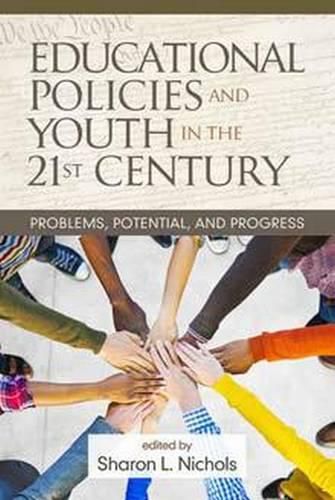Readings Newsletter
Become a Readings Member to make your shopping experience even easier.
Sign in or sign up for free!
You’re not far away from qualifying for FREE standard shipping within Australia
You’ve qualified for FREE standard shipping within Australia
The cart is loading…






This title is printed to order. This book may have been self-published. If so, we cannot guarantee the quality of the content. In the main most books will have gone through the editing process however some may not. We therefore suggest that you be aware of this before ordering this book. If in doubt check either the author or publisher’s details as we are unable to accept any returns unless they are faulty. Please contact us if you have any questions.
As our student population diversifies rapidly, there is a critical need to better understand how national, regional, and/or local policies impact youth in school settings. In many cases, educational policies constructed with the goal of helping youth often have the unintended consequence of inhibiting youth’s potential. This is especially the case when it comes to youth from historically underrepresented groups. Over and over, educational legislation aimed at improving life for youth has had the negative effect of eroding opportunities for our most vulnerable and often times less visible youth.
The authors of this book examine the schooling experiences of Hispanic, African American, Indigenous, poor, and LGBT youth groups as a way to spotlight the marginalizing and shortsighted effects of national education language, immigration, and school reform policies. Leading authors from across the country highlight how educational policies impact youth’s development and socialization in school contexts. In most cases, policies are constructed by adults, implemented by adults, but are rarely informed by the needs and opinions of youth. Not only are youth not consulted but also policymakers often neglect what we know about the psychological, emotional, and educational health of youth. Therefore, both the short and long term impact of these policies have but limited effects on improving students’ school performance or personal health issues such as depression or suicide.
In highlighting the demographic and cultural shifts of the 21st century, this book provides a compelling case for policymakers and their constituents to become more sensitive to the diverse needs of our changing student population and to advocate for policies that better serve them.
$9.00 standard shipping within Australia
FREE standard shipping within Australia for orders over $100.00
Express & International shipping calculated at checkout
This title is printed to order. This book may have been self-published. If so, we cannot guarantee the quality of the content. In the main most books will have gone through the editing process however some may not. We therefore suggest that you be aware of this before ordering this book. If in doubt check either the author or publisher’s details as we are unable to accept any returns unless they are faulty. Please contact us if you have any questions.
As our student population diversifies rapidly, there is a critical need to better understand how national, regional, and/or local policies impact youth in school settings. In many cases, educational policies constructed with the goal of helping youth often have the unintended consequence of inhibiting youth’s potential. This is especially the case when it comes to youth from historically underrepresented groups. Over and over, educational legislation aimed at improving life for youth has had the negative effect of eroding opportunities for our most vulnerable and often times less visible youth.
The authors of this book examine the schooling experiences of Hispanic, African American, Indigenous, poor, and LGBT youth groups as a way to spotlight the marginalizing and shortsighted effects of national education language, immigration, and school reform policies. Leading authors from across the country highlight how educational policies impact youth’s development and socialization in school contexts. In most cases, policies are constructed by adults, implemented by adults, but are rarely informed by the needs and opinions of youth. Not only are youth not consulted but also policymakers often neglect what we know about the psychological, emotional, and educational health of youth. Therefore, both the short and long term impact of these policies have but limited effects on improving students’ school performance or personal health issues such as depression or suicide.
In highlighting the demographic and cultural shifts of the 21st century, this book provides a compelling case for policymakers and their constituents to become more sensitive to the diverse needs of our changing student population and to advocate for policies that better serve them.